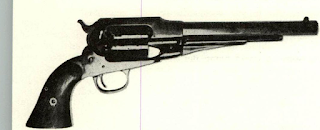Some of the guns remained in storage until long
“When did your father die, sir?” Buder queried. “In
Less humorous, more exciting, was the career of Mr.
Spencers were in demand but the Government had
Johnston, among others, wanted these to sell to
“When did your father die, sir?” Buder queried. “In
Less humorous, more exciting, was the career of Mr.
Spencers were in demand but the Government had
Johnston, among others, wanted these to sell to

Comments
Post a Comment